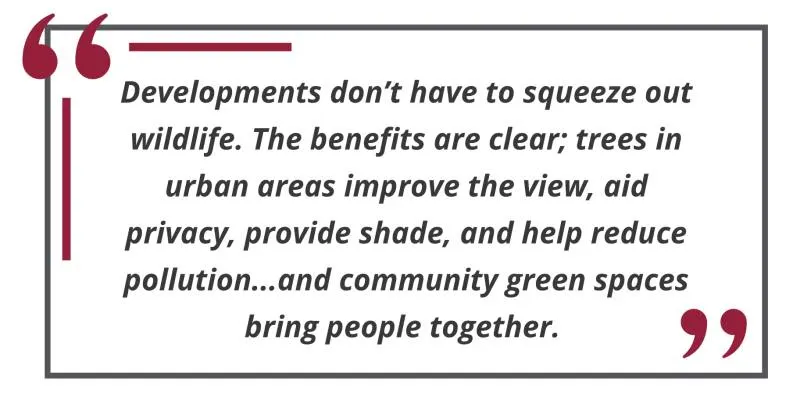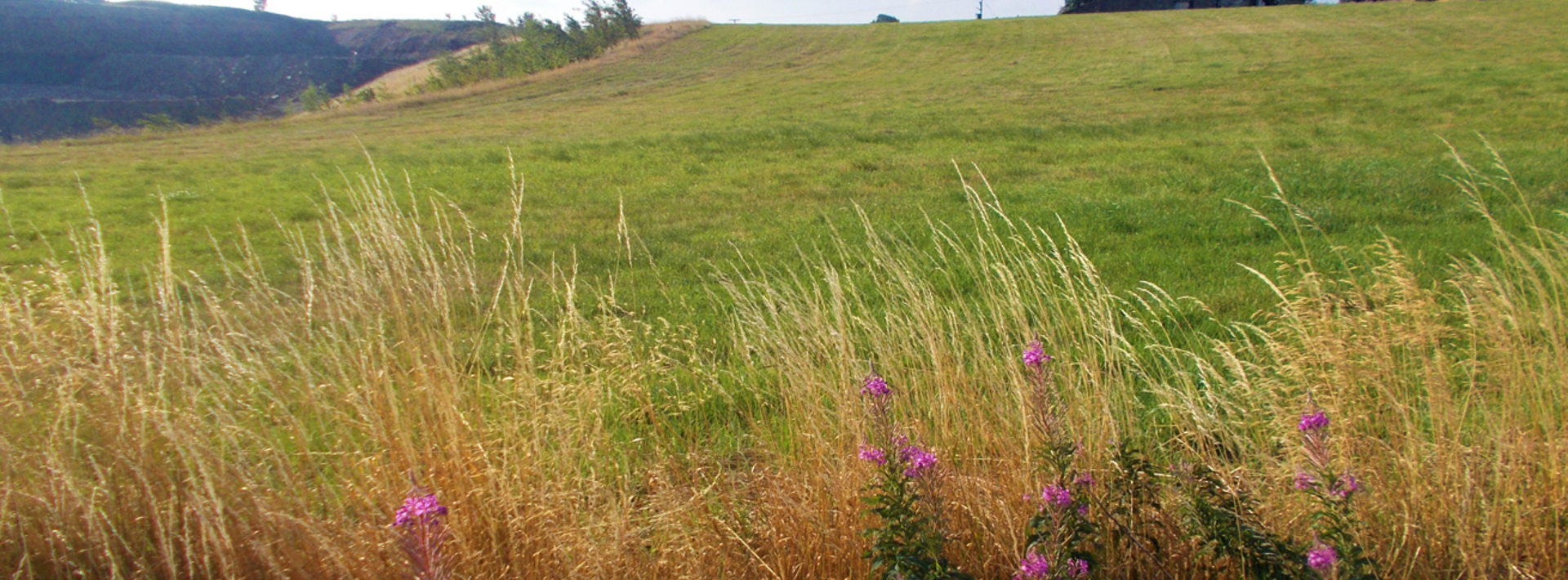Blog
As individuals and societies, our lives are intertwined with the natural world. The air we breathe, the food we eat, the ground we walk on, and the professions we hold all rely on healthy natural ecosystems, and as these systems fall out of balance, so do our ways of life.
In fact, according to recent research from The World Bank, over half of global GDP depends on nature, so protecting species, safeguarding habitats and preserving natural resources are of critical importance for people worldwide.
This isn’t just an issue for less economically developed countries and countries with agriculture-based economies though, it’s also a problem facing the UK. According to extensive studies from the National Biodiversity Network, the UK has seen significant declines in native wildlife populations, with nearly one in six of more than ten thousand species being at risk of disappearing from Great Britain(1).

Quote from Friends of the Earth
Faced with these worrying numbers and increasing pressure from environmental groups, the UK government is seeking to address the situation by implementing a series of biodiversity net gain legislative changes that came into force on the 12th of February 2024.
In this guide, we fully explore the topic of biodiversity net gain, providing answers to the critical questions those of us working in the construction industry should be asking, if we’re to operate in accordance with new legislation.
What is biodiversity net gain?
As stated in recent documentation published by Natural England, biodiversity net gain (BNG) is:
“...an approach to development, land and marine management that leaves biodiversity in a measurably better state than before the development took place.”
BNG is a mandatory legislative commitment to uplift the biodiversity on new development sites by a minimum of 10% for at least 30 years.
The policy, an amendment to schedule 7a of the Town and Country Planning Act 1990, seeks to ensure that development projects not only avoid harming biodiversity but ensure “development has a measurably positive impact (‘net gain’) on biodiversity compared to what was there before development.”
Why has new biodiversity net gain legislation been passed?
In the face of escalating environmental challenges, governments around the world, including the UK, are recognising the need to address biodiversity loss with increasing urgency.
Data from the State of Nature report, the most comprehensive report on UK wildlife and biodiversity, found that, since monitoring began in 1970
“The UK’s wildlife is continuing to decline; nearly one in six of the more than ten thousand species assessed (16%) are at risk of being lost from Great Britain. However, this figure is much higher for some groups (43%), amphibians and reptiles (31%), fungi and lichen (28%) and terrestrial mammals (26%)”.” There have also been declines in the distributions of more than half (54%) of our flowering plant species”.
The need to take decisive, impactful action is, therefore, non-negotiable.
The 2021 Environmental Act laid the groundwork for these legislative changes, but BNG introduced new obligations and operating standards for developers and local planning authorities.
How biodiversity net gain legislation aims to combat biodiversity loss in England
There are a number of ways in which the BNG legislation will combat biodiversity loss, these can be summarised as follows.
1. Mandate the provision of spaces for nature on all but the smallest developments
For the first time, biodiversity improvements will be written into planning legislation, helping to create spaces for nature close to people’s homes.
2. Encourage development of land which has low biodiversity value over land of high biodiversity value
The Biodiversity Metric tool encourages development on sites with low biodiversity value. On a site with a low baseline number of biodiversity units, a 10% uplift is easier to achieve than it is from one with a high level.
3. Bolster existing protection of irreplaceable habitats
Irreplaceable habitats, such as Blanket Bogs and Limestone Pavements, are not subject to the 10% BNG uplift, and there are no changes to the existing protections of these habitats.
As stated in the guidance on the DEFRA blog, developers must understand that:
“For BNG purposes, the 10% net gain requirement is not applied to irreplaceable habitats, as they are so valuable, they cannot be easily recreated […] If there is a loss of irreplaceable habitat as a result of the development, these habitats will be excluded from your BNG calculation as the habitats are so valuable, it could be impossible for you to meet the BNG requirement.”
4. Ensure that ecological professionals are always involved in the development process
This ensures that habitat assessments are accurate and that new habitat provision is of high quality and suited to the site conditions.
The BNG brochure explains how the process of calculating the value of habitats using the Biodiversity Metric tools should be carried out by a specialist, usually an ecologist, who will have the experience and knowledge needed to evaluate the environmental impacts of a development.
The professional will look at the habitat’s size, condition, distinctiveness and strategic significance when comparing its situation before and after a proposed development.
5. Prioritise on-site improvements to biodiversity
The metric scoring system scores on-site interventions highest in its methodology through the spatial risk multiplier, which assigns a higher value to units delivered on or near the development site.
On-site improvements to biodiversity bring additional benefits, including increased amenity value, improved well-being for residents, and ecosystem services such as the reduction in the urban heat island effect and flood mitigation.
6. Increase the amount of land being used for nature
BNG legislation is likely to have the consequence that developments use more land than what would have previously been required for the development, as the BNG obligation could take up a larger proportion of the space required, or there may be the necessity for off-site provision. This land will be used to create biodiverse spaces, which are maintained and protected for 30 years.

Quote from London Wildlife Trust on Natural England
Who does biodiversity net gain legislation affect?
BNG directly affects developers, Local Planning Authorities (LPAs) and land managers looking to sell land to either of these parties(2).
It is set to be rolled out in phases. Legislation for large developments came into force in February 2024, with rules for small-scale developments scheduled for the 2nd of April. Guidance for infrastructure-scale projects is set to be rolled out in 2025, though there is no fixed date as of yet.
Almost all developers of schemes requiring planning permission will be affected, with the following exemptions:
- Smaller sites will be subject to different rules (currently unpublished)
- Some of the smallest developments will be exempt entirely
- Self-build and custom-build proposals with fewer than nine dwellings on a site of less than 0.5Ha will not be affected, provided that the plans only include dwellings and that these dwellings are as defined in section 1(A1) of the Self-build and Custom Housebuilding Act 2015
- Householder applications for small projects (e.g. conservatories and extensions) are not included
Pre-planning and proposal guidance for developers
Using the Biodiversity Metric tool
At the pre-planning stage of a project, the proposed development land is assessed and scored using the DEFRA statutory Biodiversity Metric tool.
This tool, which has taken multidisciplinary teams over a decade to develop, was published in January 2024 and provides a platform where different habitats on a proposed development site can be assessed and valued.
The habitats are, in large, aligned with the UK habitat classifications, assigned to have varying levels of ecological value, and scored accordingly.
In practice, here is an overview of how the Biodiversity Metric tool is used:
- A competent professional, ideally an ecologist, will first assess and input the type/s and quality of habitat present on the proposed site and then, using the tool, multiply the following:
- The area of the different habitats on the site in hectares
- The distinctiveness score of each habitat
- A score for the condition of each of the habitats
- A score for its strategic significance
- Referencing the BNG design proposal for the site, they will adjust the total from the previous calculation by:
- A difficulty multiplier (difficulty of improving or creating the habitat)
- A temporal multiplier (time taken for the new habitat to achieve target condition)
- A spatial multiplier (proximity to the site)
According to Stephen Panks, Principal Specialist in Biodiversity Net Gain at Natural England, the metric “provides an evidence-based and standardised way of accounting for habitat change scenarios. It’s a useful tool to communicate the value of nature to non-technical audiences. It enables the standardised measurement of habitat delivery on the ground in a way that has not been possible before.”
Crucially, it ensures that, for the very first time, all habitats can be afforded value in the development process, not just the rarest of those with legal protection(3).
Recording findings and submitting for approval
This unit scoring from the metric tool provides a baseline measurement, which is counted in biodiversity units. The development site can then be broken down into habitat areas or parcels of land scored by the number of biodiversity units.
Developers or Landscape Architects and Ecologists working with them can use this to inform decisions about the best position of interventions on site, retaining valuable habitats, and assessing the habitat replacement and habitat creation requirement to achieve the number of units which would be required to achieve the 10% uplift.
Developers are required to follow a mitigation hierarchy, placing the on-site retention of valuable habitats at the top, replacement/betterment on-site next, and purchasing an offsite equivalent or better, as the least favoured option. There is also an option to buy Biodiversity Credits from the government. The 10% can be achieved using any or a combination of all of the above.
Finally, using the tool, the outline design of the site’s BNG proposal is assessed to calculate and show not only whether the uplift has been achieved but also how it has been achieved.
The output of the tool is used to complete a form – the Biodiversity Gain Plan. This is submitted after the planning application gains approval and demonstrates to the Local Authority planning department that the proposal meets the legislative requirement and provides information on other details, such as biodiversity net gain register reference numbers if you’re buying off-site units and the habitat management and monitoring plan.
Pre-planning and proposal guidance for LPAs
The implementation of BNG legislation will impact Local Planning Authorities, too. They will need to be familiar with and enforce all aspects of the legislation through the planning process; it will require significant resources, skills and expertise, and once instigated, it will be in perpetuity.
Pre-application proposals for BNG and the Biodiversity Gain Plan, completed by developers and submitted after planning application approval, will need to be assessed.
Biodiversity net gain is to be secured for 30 years using legal agreements through a planning obligation with the Local Planning Authority under section 106 or under a conservation covenant, executed as a deed between the landowner and a responsible body. The responsible body could be a private sector organisation, charity, or public body, with the stipulation that its main functions/purposes or activities involve nature conservation.
The Local Government Association Planning Advisory Service (PAS) has an FAQ page to address frequently asked questions on the implementation of Biodiversity net gain.
Further support from Marshalls
Biodiversity Net Gain legislation represents a crucial tool in the global fight against biodiversity loss. By shifting the focus from mitigation to active conservation and enhancement, this approach ensures that development and environmental protection go hand-in-hand.
If you want to know more about how Marshalls can bring more biodiversity into your project, speak to the Marshalls Design Team.
References:
1 Figures published in the State of Nature 2023 report.
2 BNG guidance uses the term ‘land manger’ to refer to different roles, including landowners, farmers, estate owners, facilities managers, land agents and developers with proprietary land. Full guidance of role definitions can be found on the GOV.UK website.
3 Information on the Biodiversity Metric taken from the DEFRA blog.











